Yellow Tea is a semi-oxidized tea, positioned between Green Tea and Oolong.
The leaves are lightly withered, then gently fixed, and finally “sealed” with low-temperature roasting.
Through this process, Yellow Tea achieves a unique balance neither the bright citrus freshness of Green Tea, nor the deep smoky warmth of Oolong but rather a clear, mellow, and softly ripened harmony.
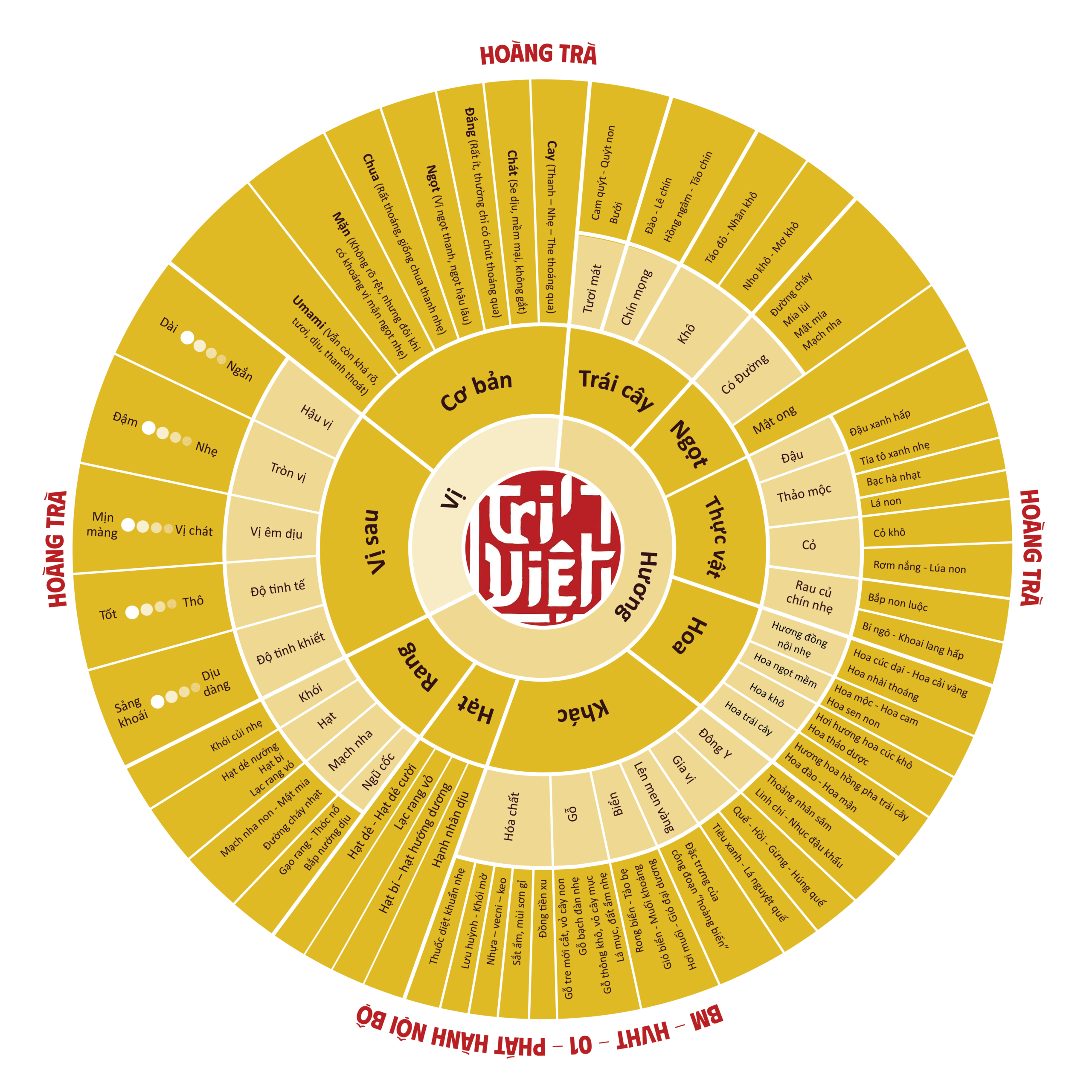
1. Decoding the Flavor Wheel
The flavor wheel illustrates the entire spectrum of aromas and tastes a tea can offer.
In the Yellow Tea wheel, the layers are organized from the center outward:
-
Inner layer: broad categories (sweet, floral, fruity, vegetal, roasted, aftertaste).
-
Middle layer: subgroups (milk, honey, herbs, coriander, smoke, roasted nuts).
-
Outer layer: detailed notes (brown sugar, milk powder, cocoa, malt).
The wheel is a tool that helps:
-
Read a cup of tea systematically.
-
Differentiate sensory levels.
-
Describe flavors precisely when communicating internally, with customers, or with production workshops.
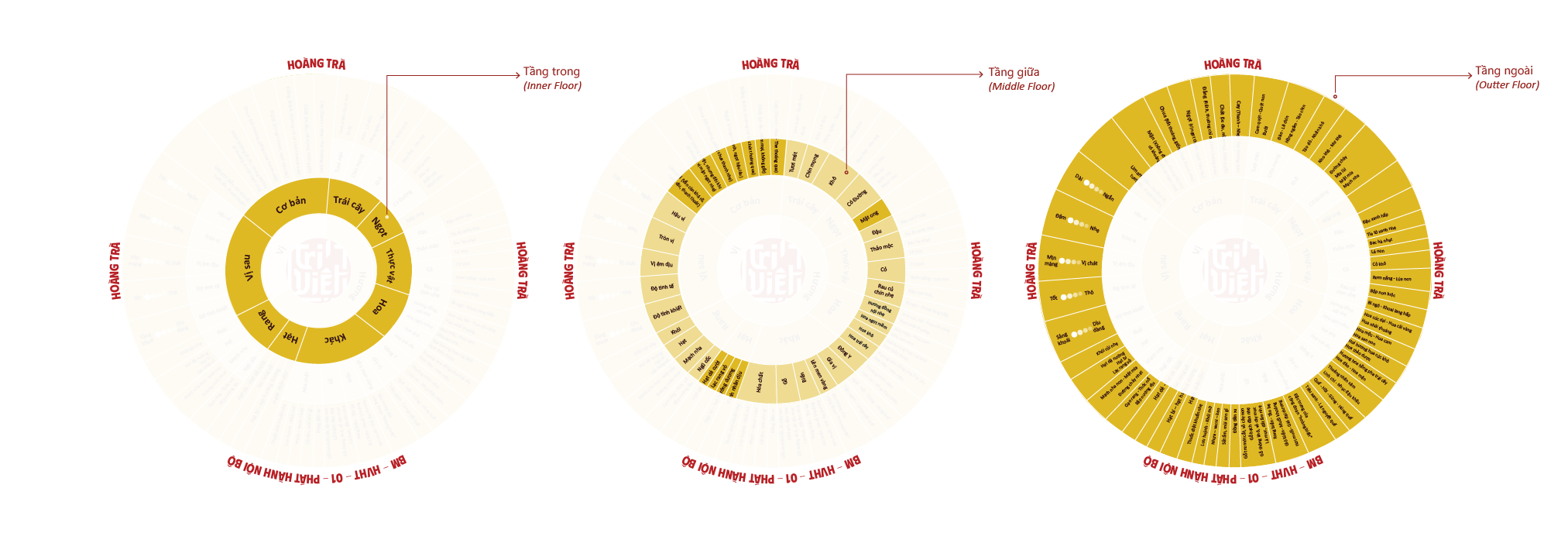
2. Principles for Reading the Wheel
-
Read from inside out: start from the main group → subgroup → detailed notes.
-
Perceive in layers: dry leaves → aroma when warm → aroma after infusion → taste.
-
Record sensations: identify front taste (sweet, astringent), body (round, thick), and aftertaste (long, citrusy).
-
Use precise terms from the wheel rather than generic words like “fragrant” or “strong.”
Regular practice with the wheel helps tea professionals train their palate,
and helps tea drinkers understand why they enjoy a particular cup.
2. Principles for Reading the Wheel
-
Read from inside out: start from the main group → subgroup → detailed notes.
-
Perceive in layers: dry leaves → aroma when warm → aroma after infusion → taste.
-
Record sensations: identify front taste (sweet, astringent), body (round, thick), and aftertaste (long, citrusy).
-
Use precise terms from the wheel rather than generic words like “fragrant” or “strong.”
Regular practice with the wheel helps tea professionals train their palate,
and helps tea drinkers understand why they enjoy a particular cup.
🍃 Fruity Aromas
A bright, lively layer often found in early oxidation and light drying.
Typical notes: orange, tangerine, pear, peach, apricot, apple, raisin.
These fruit tones arise during partial oxidation (30–40%),
when natural leaf enzymes break down sugars and starches,
producing aldehydes and esters—the foundation of ripe fruit aroma.
When the drying is stopped at the precise moment, this layer is “locked in” without burning,
creating a clear, sunny sensation—like ripened sunlight resting over tea hills.
🍃 Sweet Aromas
The warm base of Yellow Tea—defining its smooth, approachable, and versatile character.
Common notes: honey, toasted sugar, young grain, malt.
At light roast levels, sweetness resembles milk or nectar;
at higher levels, it develops into burnt sugar or gentle caramel.
These sweet notes come from the Maillard reaction (90–110 °C),
where natural proteins and sugars combine, producing depth and baked fragrance.
This forms the structural backbone of aroma—giving roundness and length to the taste.
🍃 Vegetal Aromas
The breath of the leaf and the land itself.
Notes include mung bean, fresh grass, herbs, dry straw, cooked greens.
This layer reflects both the freshness of the raw material and the precision of fixation.
If heat is insufficient, the tea smells “green” or “raw bean”;
if overheated, it loses clarity and turns dry or burnt.
A well-crafted Yellow Tea maintains a gentle, clean, transparent vegetal base
that supports higher floral and sweet layers.
🍃 Floral Aromas
The soul of Yellow Tea.
Typical notes: orchid, jasmine, orange blossom, wild yellow flowers.
These emerge during controlled moist oxidation,
when leaves “breathe” and generate natural terpenoid compounds.
If dried too early, floral notes fail to bloom;
if held too long, they convert into honey or burnt sugar.
An ideal batch reveals delicate, transparent, vapor-like florality a mark of the artisan’s sensitivity and perfect “timing of the lock.”
🍃 Complex Aromas (Other Notes)
Deep, layered tones of light wood, nuts, cinnamon, star anise, licorice, dried persimmon.
These develop from terroir, leaf maturity, and final heat retention (120–130 °C)—
the moment when the tea reaches sensory ripeness: no longer fresh, yet not charred.
This group adds depth, warmth, and authenticity—
the point where the cup feels complete, true, and deeply satisfying.
🍃 Light Roast Layer
The “signature of the craft” in Yellow Tea lies in what is barely there yet beautifully held.
Roasting heat is just enough to stabilize aroma, remove raw notes,
and bridge the floral – sweet – vegetal layers.
Typical notes: biscuit, grain, light malt, baked flour.
Unlike Oolong, which requires constant hand-turning and fire catching,
Yellow Tea demands gentle drying and even heat breathing.
A difference of only 3–5 °C can make or break it:
too hot and floral tones vanish; too cool and vegetal notes stay unripe.
The light roast stabilizes fragrance, extends the gentle sweetness,
and creates a “craft-made, non-industrial” feel.
🍃 Light Roast Layer
The “signature of the craft” in Yellow Tea lies in what is barely there yet beautifully held.
Roasting heat is just enough to stabilize aroma, remove raw notes,
and bridge the floral – sweet – vegetal layers.
Typical notes: biscuit, grain, light malt, baked flour.
Unlike Oolong, which requires constant hand-turning and fire catching,
Yellow Tea demands gentle drying and even heat breathing.
A difference of only 3–5 °C can make or break it:
too hot and floral tones vanish; too cool and vegetal notes stay unripe.
The light roast stabilizes fragrance, extends the gentle sweetness, and creates a “craft-made, non-industrial” feel.
3. Taste Groups – Basic Tastes
Primary taste dimensions: sweet, astringent, bitter, spicy, salty.
Yellow Tea offers a soft sweetness, mild astringency, and round after-feel,
creating a sense of smoothness and youthful clarity.
This balance depends on both oxidation level and leaf origin.
-
Highland (Bao Loc) teas: naturally sweet and silky.
-
Lowland or plains teas: more structured, assertive
4. Aftertaste – The Final Memory
Aftertaste is the “final memory” of tea.
In Yellow Tea, it is sweet, smooth, and lingering—
cleaner and purer than Oolong’s deep smoky trail.
It reflects a well-handled oxidation, drying, and roasting process:
no excess moisture, no over-firing, no trapped smoke.
The longer and silkier the aftertaste, the more mature and stable the craft.
5. How to Use the Flavor Wheel During Tasting
-
Smell the dry leaves: identify base aromas and jot down initial notes.
-
During infusion: capture vapor aromas—floral, milky, honeyed, smoky.
-
Taste the liquor: sense the transition from front → body → aftertaste.
-
Refer to the wheel: locate corresponding aroma/taste groups for accuracy.
-
Record and compare: keep a sensory log for batches, seasons, and drying styles.
Systematic tasting helps you understand your own flavor profile
and choose the right tea—for your shop, your blends, or your personal enjoyment.
6. Summary
Yellow Tea is a tea that walks between two worlds:
-
Retaining the fresh brightness of Green Tea.
-
Carrying the depth and roundness of Oolong.
It is “the tea of those who know when to pause”—
neither chasing bold aroma nor forcing deep intensity.
In the craft, Yellow Tea is called the balanced tea:
between oxidation and heat, between technique and emotion.
When the Yellow Tea flavor wheel is read correctly
-
artisans can refine oxidation, drying, and roasting
-
brewers can find the ideal infusion style
-
tea drinkers can name and share the emotions awakened in each cup.



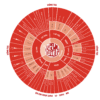
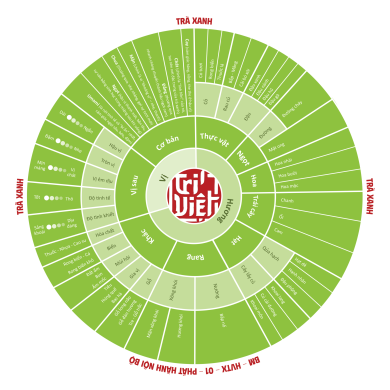
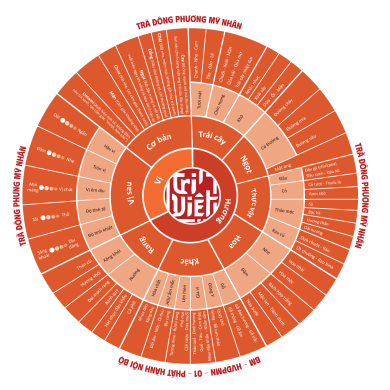
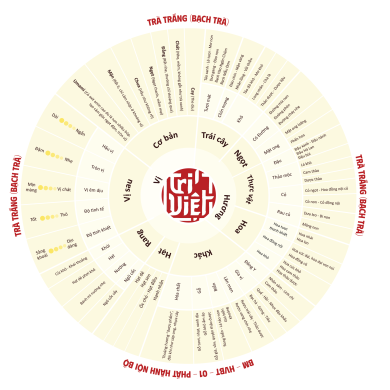
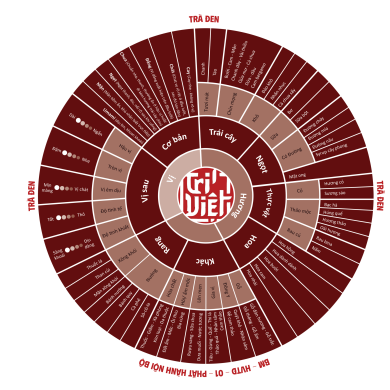
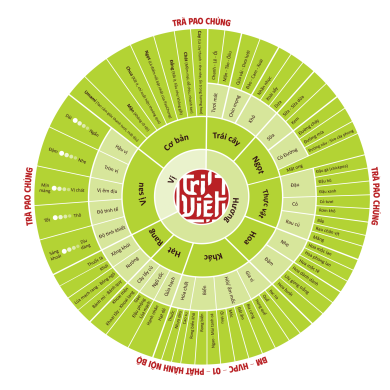

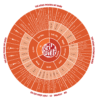
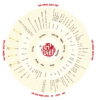

Add comment